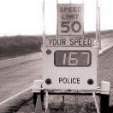Carburetor STC
-
Members Online
- MikeOH
- ArtVandelay
- N201MKTurbo
- dzeleski
- pkellercfii
- Flyler
- ckb
- hubcap
- Jarerh
- Guillaume
- GRM321
- TCC
- Rwsavory
- DMM
- Shorty
- Marc_B
- buddy
- slowflyin
- BradKratz
- Skates97
- ElkoRandy20J
- Michael Tarver
- Kevin Westbrook
- Paul Thomas
- Grumpy
- 201Mooniac
- mike_elliott
- prestonvanloon
- robert7467
- Pembroke Advisor
- A64Pilot
- Ibra
- goodyFAB
- hobbit64
- alexz
- AviH
- MarquezJC


Recommended Posts
Join the conversation
You can post now and register later. If you have an account, sign in now to post with your account.